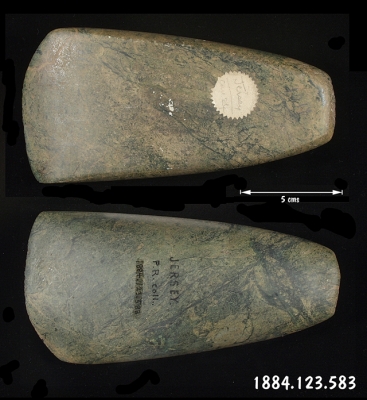To search the RPR site click here
Contemporary museum practice for the founding and second collections
Today agreed museum standards set by national bodies are met by most museums in the UK, and these determine how museum collections are documented. Museum documentation (the recording of data associated with the artefacts in the care of the museum) comes in two broad forms: that which takes place away from the object, and that which takes place on the object.
Each object is allocated a unique accession number, which is permanently assigned to that single object (or part of an object, if it can be physically divided like a pottery vessel and its lid). This number acts as the most basic, and important, part of documentation for any object. In addition to the number, any known information (provenance: where the object is from, who collected, owned and donated it, what the object is and what it was used for, its measurements etc etc) are recorded into catalogues. In the past these catalogues (often called accession registers) were handwritten records, entries being added as each object was accessioned (taken formally into the museum's care). These days such catalogues are created and updated on computers using a number of purpose-made or generic museum software programmes.
The second aim of documentation is to mark the object permanently as being a museum possession. To this end many museums have in the past inscribed much information directly onto objects. Rather than having some data only recorded in the paper registers or on a label tied to the object, they recorded it onto the object itself (or its stand) in clearly visible ink. Today all museums record the accession number directly onto the object (if at all possible, sometimes the material from which the object is made makes this impossible and in these circumstances a label containing this data is usually permanently attached). More information is added to purpose-made labels which are tied to the object.
Today the Pitt Rivers Museum at Oxford upholds the highest possible museum standards for documentation as for everything else. However, museum practice was different in the past and it is the past methodology which this section of the website is interested in. This section will explore the documentation standards that were met in the past at the Pitt-Rivers Museum at Farnham and for the founding collection items before and after they came to Oxford.
Find out more about founding collection documentation
Find out more about the second collection's documentation
Find out about documentation of the British Museum's collections by A.W. Franks around 1876
AP, 2010.




